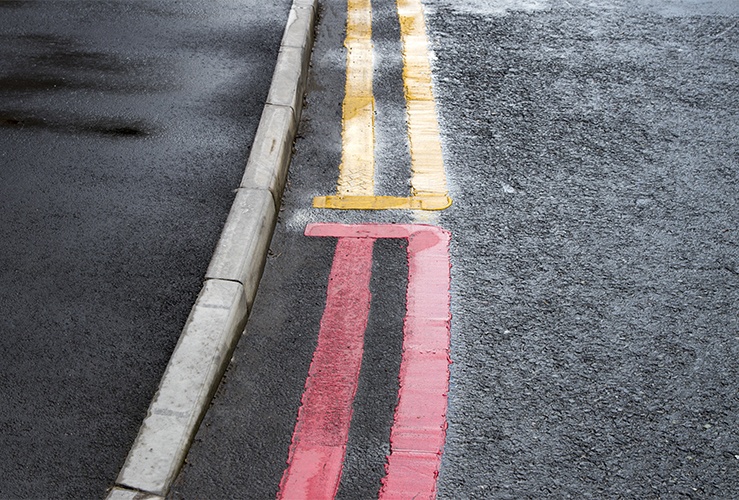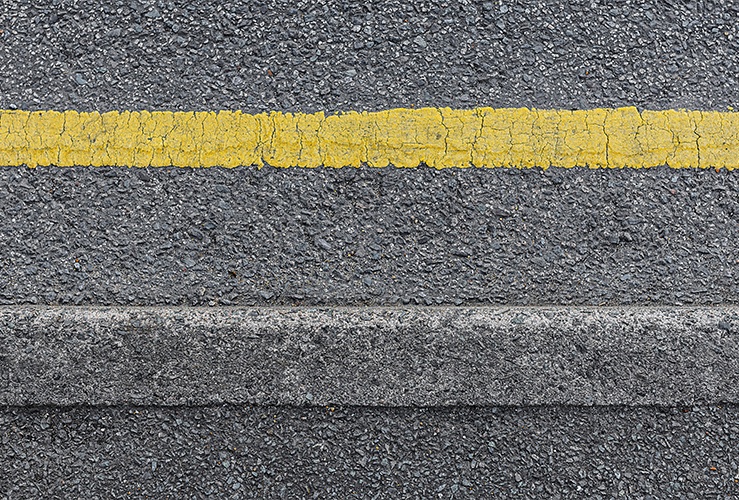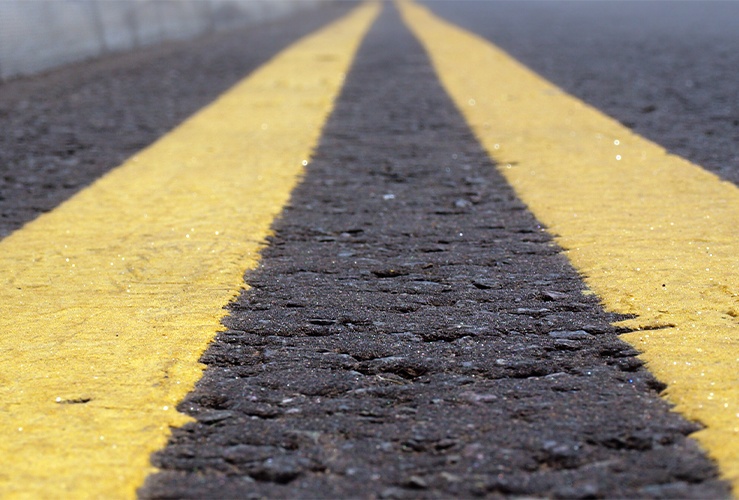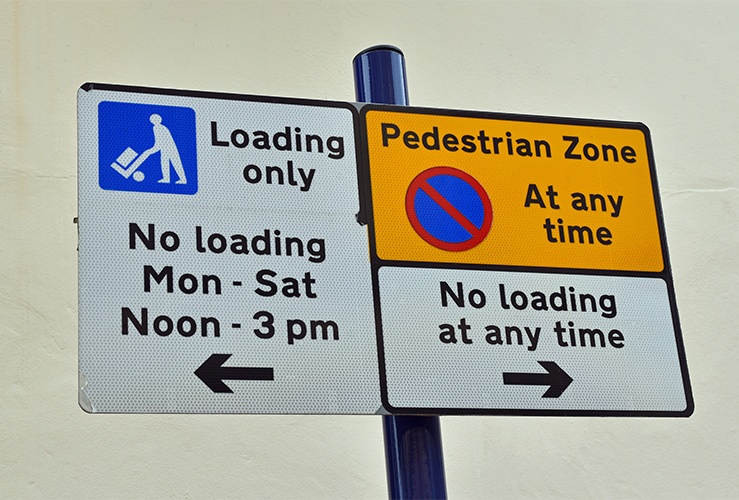Need a quick refresher on what single/double yellow and red lines mean? These common markings give motorists information about where they can and cannot park (or "wait"), or load/unload goods and deliveries. Here is all you need to know about these important road markings.

This means there are restrictions on how long you can stop at a particular location, for what reasons you can stop there, and any penalties for not obeying these restrictions.
Nearby will be a small rectangular yellow sign (sometimes white) telling you about any restrictions related to the yellow line. It will feature a "no waiting" sign - a blue disc with a red border and a red diagonal line. It will also give you information about parking/waiting periods. For example:
No Waiting
8am to 11am
4pm to 6pm
Outside of these times, you can park here unrestricted. Note that you may be required to "Pay & Display" to park there during unrestricted periods.
It may also detail exceptions - such as “Except Taxis".
Sometimes people avoid single yellow lines altogether because they don’t understand that restrictions are only in place for certain periods of the day. With the above example, if you had a restaurant reservation for 7pm, you would be within your rights to park in that location for the evening (notwithstanding any Pay & Display requirements).

If you see a single yellow line, you can also pick up and drop off passengers, and load and unload paid-for goods/deliveries. However, make sure there are no restrictions on the sign stating this is not allowed.
So long as you meet the restrictions on the sign, there is no requirement to use hazard warning lights.
What if I am a Blue Badge holder?
Refer to the guidelines in your handbook. As long as you adhere to these and are not causing an obstruction, you are parked legally.
Double yellow lines mean you cannot wait or park at any time. There will be no sign on any nearby lamppost.
These are short yellow lines on the kerb and pavement, painted perpendicular to the road. These relate to loading an unloading in that area. You will see a nearby sign detailing restrictions.
Loading restrictions are in place - check the nearby sign. For example, you may not be able to load and unload between 9am and midday, and 3pm and 6pm. Picking up and dropping off passengers is permitted. Blue Badge holders cannot park here when loading restrictions are in place.
No loading at any time.

This is one red line painted on the road by the pavement. It means no stopping for any reason during restricted periods, which will be detailed on a nearby sign. It means that during these times you cannot pick up or drop off passengers (unless they are disabled), or load/unload goods or paid-for deliveries. The sign will feature a blue disc with red border and a red cross.
No stopping/parking or loading/unloading at any time. You see these lines near places like hospitals and government buildings.
Note that stopping is permitted if you break down or suffer a medical emergency.
The key differences between double yellow and double red lines is that double-yellows permit loading and Blue Badge parking, and double-reds do not.

Road markings can fade over time, making it less clear what restrictions are in place. Sets of lines can also butt up against others. For example, on a particular stretch of road, a set of double yellows may give way to a single yellow line, with the addition of single ticks. You may also see two adjacent sets of signage that give conflicting notifications eg. stating that parking is permitted during different periods of the day.
Thankfully most road markings and signs are clear enough to understand.
Always look for a restrictions sign to find out if you can stop/park there.
If you're wondering how you can find free parking, read on here.




